When Adrian Wright’s riding buddy, Will Norman, died of cancer during lockdown, he and his other mountain bike friends couldn’t mark his passing as they might have hoped. Like many, they wanted to raise funds in Will’s memory – but rather than entering the London Marathon or undertaking a charity ride, they devised a whole new route and event. If you’re contemplating how to mark a friend’s passing, or maybe just thinking of trying this new route, we thought you might find Adrian’s experience interesting, moving, and useful.
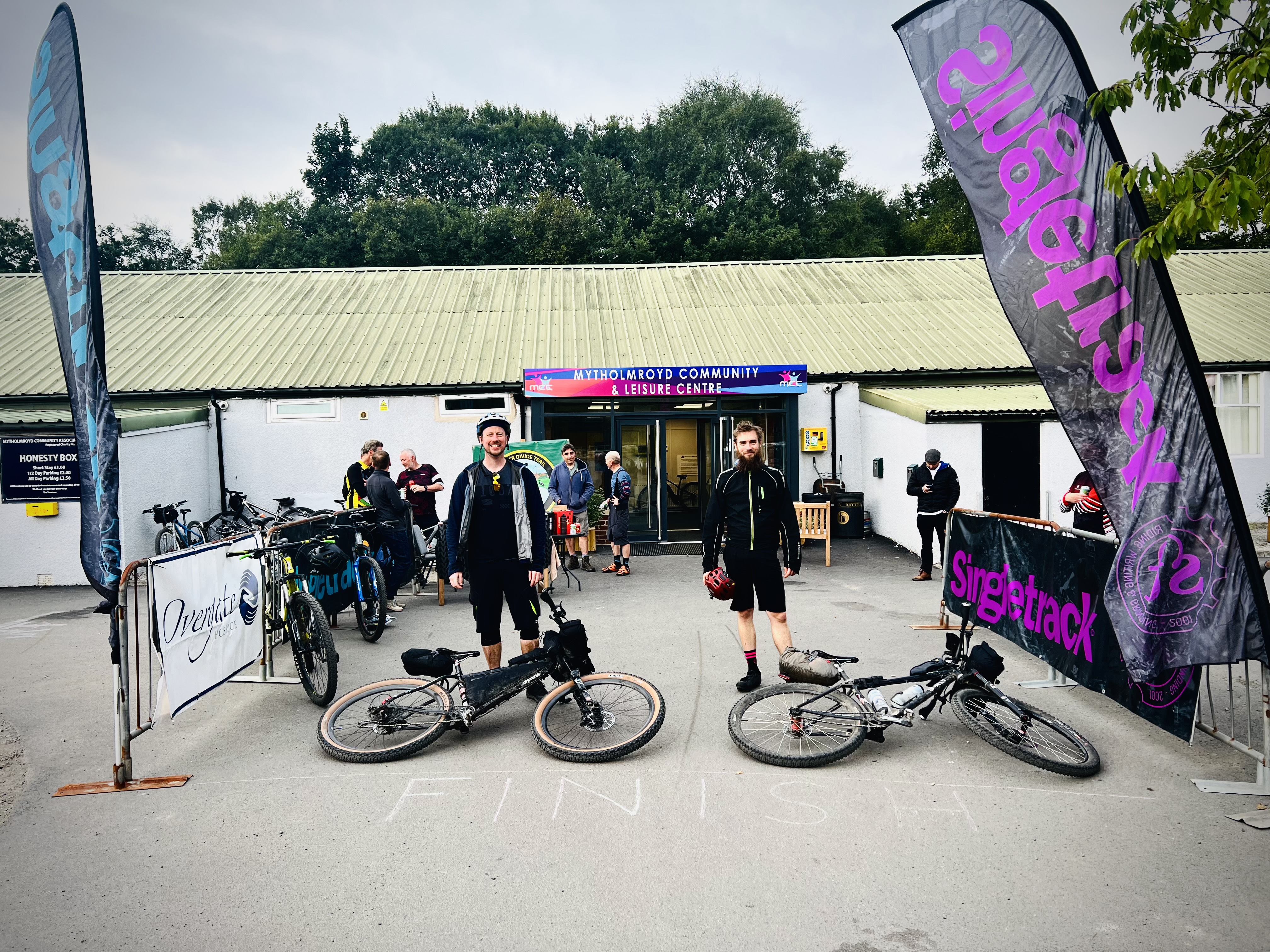
Why did you decide to plan a whole new event and route as a fundraiser, rather than ride an existing one?
The Calder Divide Trail Challenge was held as a fundraiser for Overgate Hospice as our riding friend Will Norman spent his last few days in the care of the staff and nurses up on Hullen Edge. For about five years Will rode with Bike Club, a group of mountain bikers who tend to meet in the Big 6, a pub in Halifax. Will died during the covid pandemic and his funeral was online. We couldn’t commemorate his passing in any meaningful way as Bike Club for months. When we eventually met up back at the Big 6 we made a promise to do a ride for Will. This event was to uphold that promise. Sure it’s a much longer route than anyone thought possible or sensible for a bunch of middle aged mtb-ers but I reckoned it would work as a two day bikepacking event and I had a feeling a trail on a real divide would attract a few riders. Some events charge hundreds of pounds. I couldn’t charge that but reckoned a £40 entry fee would raise a decent amount. If as a group of mtb-ers we’d had a wipe round in the pub we would have raised £40/£50. When I read on the Overgate website that it cost £2,000 a day to run the day care I thought that was a drop in the ocean compared to what they need. As people know hospices are charitable organisations funded by voluntary efforts.
Will joined Bike Club after his partner Liz approached me in the pub one night and asked if other riders could join the group. I said of course and took Will’s name and email. Later that week I got in touch with Will and he became a regular. Riding through the winter. Going out on Saturday rides. Joining the annual Bike Club awards night out. His death at the age of 42 was a real blow to all of us.
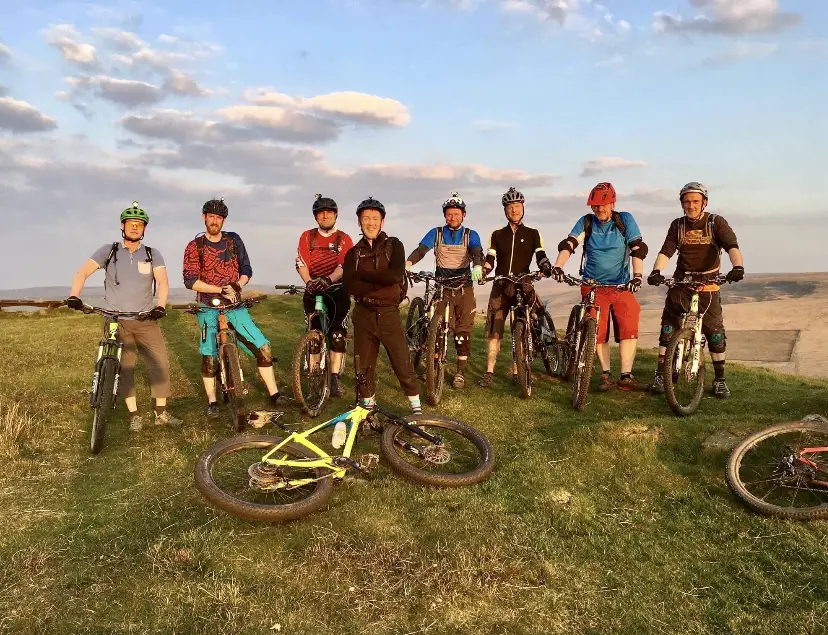
Will was a quiet, gentle bloke. 6 foot 2 and strong on his bike. He always had time for a chat. He always had a smile. When I met up with him for the last time he was with Liz and his two young children in the Piece Hall in Halifax. It was between the various lockdowns and everyone was out. On that day I was in a record/coffee shop called Loafers and Will was sitting outside with a coffee enjoying the sun. We got talking. Liz looked at Will and said “You need to tell him”. I knew what was coming next. Will laughed but Liz pressed on. “He doesn’t have much longer” she said. There wasn’t much we could say. So we just sat beneath the old sandstone columns and watched the children run around. Eventually I got up, shook his hands and said ‘Bike Club have been asking after you. We’ll do a ride. We keep your spot in the Big 6’. I didn’t see him again.
Six months later Liz got a real surprise when I turned up at her house with the Challenge idea. It threw her at first. She was busy raising two children. She had a full time job. But she was a fell runner and loved the hills just like Will did and inside 5 minutes we were recalling stories of Will and his bike which was way too small. She gave her blessing to the event and I got on with the planning.
Did you have any experience in route planning, or event organisation?
I’ve been bikepacking to a fair few places and that always involved route planning with OS paper maps. But I’ve never organised an event before so that was a steep learning curve.
I didn’t get a Garmin till October last year when I rode the BB200 so my trip up to Cape Wrath in 2015, a multi-day ride into Ennerdale plus a week bikepacking in the Norfolk Broads and on the King Alfred’s Way was all done with paper maps. That helped when I started to connect the different trails across the CDT because it’s much easier to see the links between valleys and moors if you have them spread out in front of you on a piece of paper.
Was setting the route an easy task? What challenges were there?
The route (Calder Divide Trail) emerged out of the covid pandemic when so much of ordinary life was on hold. Like many riders I need my open, green spaces to get away from all the pressures of working life. As a reaction to so much being shut down I set myself the target of riding the Highland 550 in May of 2022. That meant I needed to get out on long rides. During lockdown I became very familiar with local routes in the Upper Calder Valley around Hebden Bridge and Todmorden so I started to explore trails I had never been on in the Lower Calder Valley. Places like Dewsbury, Mirfield and Wakefield that weren’t on my mental map. Eventually on one ride back in August 2021 I ended up on the Millennium Bridge in Castleford, about 40 miles from my house in Halifax having never touched tarmac.
This trail would have been filed away under ‘local loop to wobbly bridge’ if it hadn’t been for two chance encounters. The first was down at Stanley Ferry on the Calder and Aire navigation where dozens of canal barges gather. There’s a nature trail nearby and an information board which said the area of low lying marshes was called the Southern Washlands. I’d lived in the Calder Valley for 30 years and had never heard of the Southern Washlands so on my next ride I was off exploring miles of ace gravel tracks built on the floodplain taking me on a 75 mile circular route. Again these new trails would have been filed away as ‘gravel bike fun ride’ if it wasn’t for the next encounter.
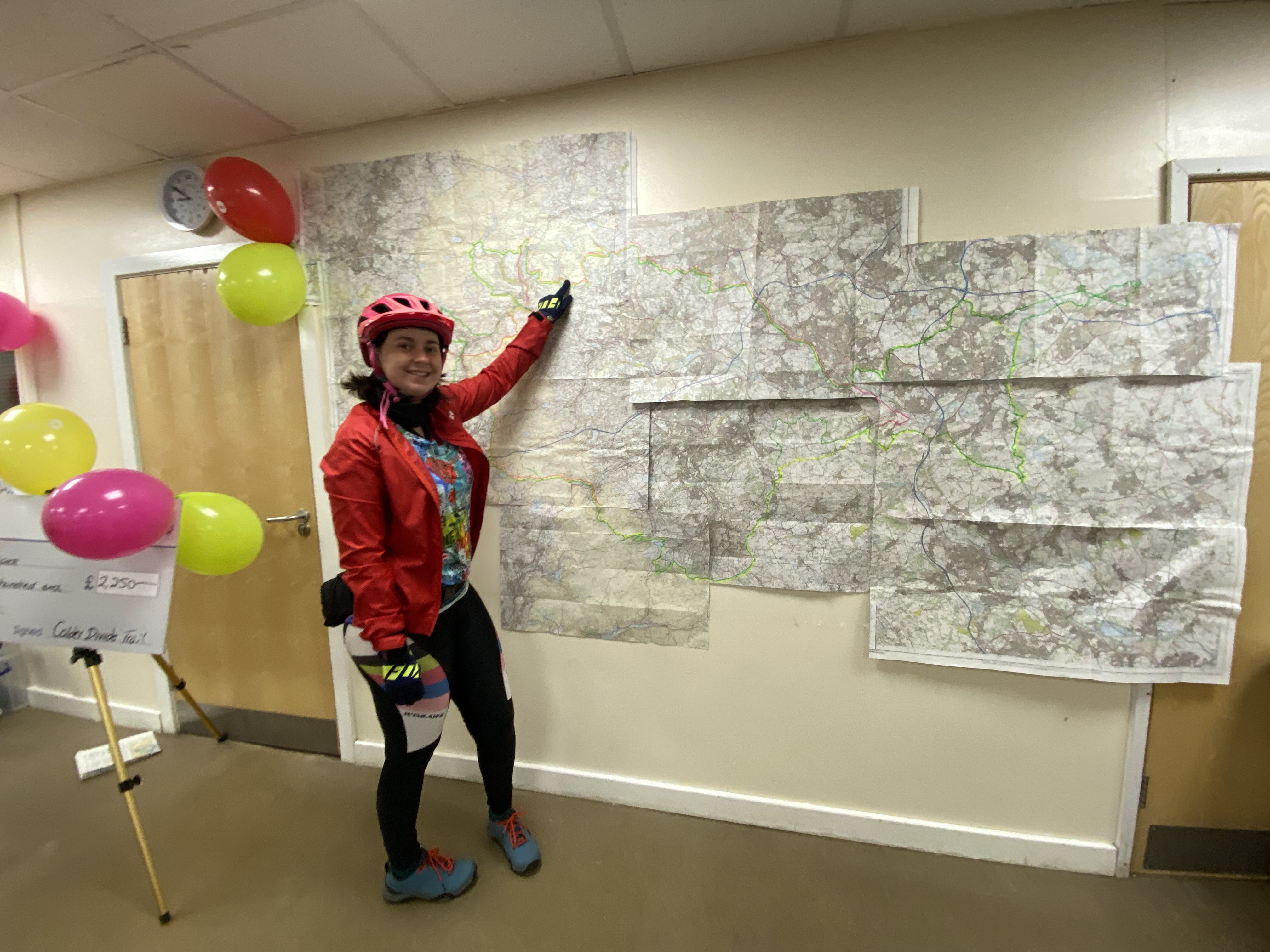
That weekend, back in August 2021, I came across an article about Robert Szucs and this sowed the seed of a trail along the watershed of River Calder. Szucs draws maps using satellite data to create stunning visualisations of nature’s patterns. On a map of the British Isles every river basin is represented by a different colour and within each basin the thickness of the lines represent the volume of water. Szucs map opened my eyes to a trail that I hadn’t seen before. For many years I had ridden on trails in the Upper Calder Valley over to Hebden Bridge and above Todmorden. But this was only a part of the watershed of the Calder. Szucs’ digital map helped me see the whole watershed of the Calder.
So I set out to explore the network of trails that were there, on strips of common land, created by local people over the last 4,000 years, from the Pennine moors in the west such as Flower Scar and Whirlaw Common and on through steep sided wooded valleys such as Coxley and Royston in the east. The biggest challenge was to find a way around two obstacles. The first obstacle was the trails we rode on a Wednesday night that were footpaths. Organising a public event meant that footpaths were off limits. More frustrating were the dozens of trails that are ‘lost lanes’. On the ground there is evidence they were once packhorse routes but when OS maps were redrawn back in the 1930’s map makers failed to record the correct historic use. So now we are officially excluded from miles of trails that, in a more enlightened nation, we should have open access to.
What tips would you give someone planning to devise a route for a new event?
Devising a route and planning an event are two very different things. In my mind a route has to be about something. The landscape we ride through has been shaped by natural forces and generations of people so a route should reflect that. That’s why I rode An Turas Mor up to Cape Wrath and the Kings Alfred’s Way because for me riding a bike is about connecting to places. When I realised that a trail along the watershed of the River Calder would make a circular route and ride through such a diversity of places from the reclaimed slag heaps of Walton Colliery Country Park to the medieval packhorse bridge in Ramsden Clough and on past the Neolithic burial chamber on Midgley Moor, I saw that this gave the CDT a real identity.
Planning a route and an event means you have to get on with marketing. So spend time figuring out your USP. I soon realised I just needed to reference the places I knew as a rider. That meant creating a logo with landmarks such as Stoodley Pike and the flour mill down at Castleford as well as acknowledging the curlews and herons that are a part of the wild spaces around me. Once you have a logo then you’re helping entrants visualise what the ride is about.

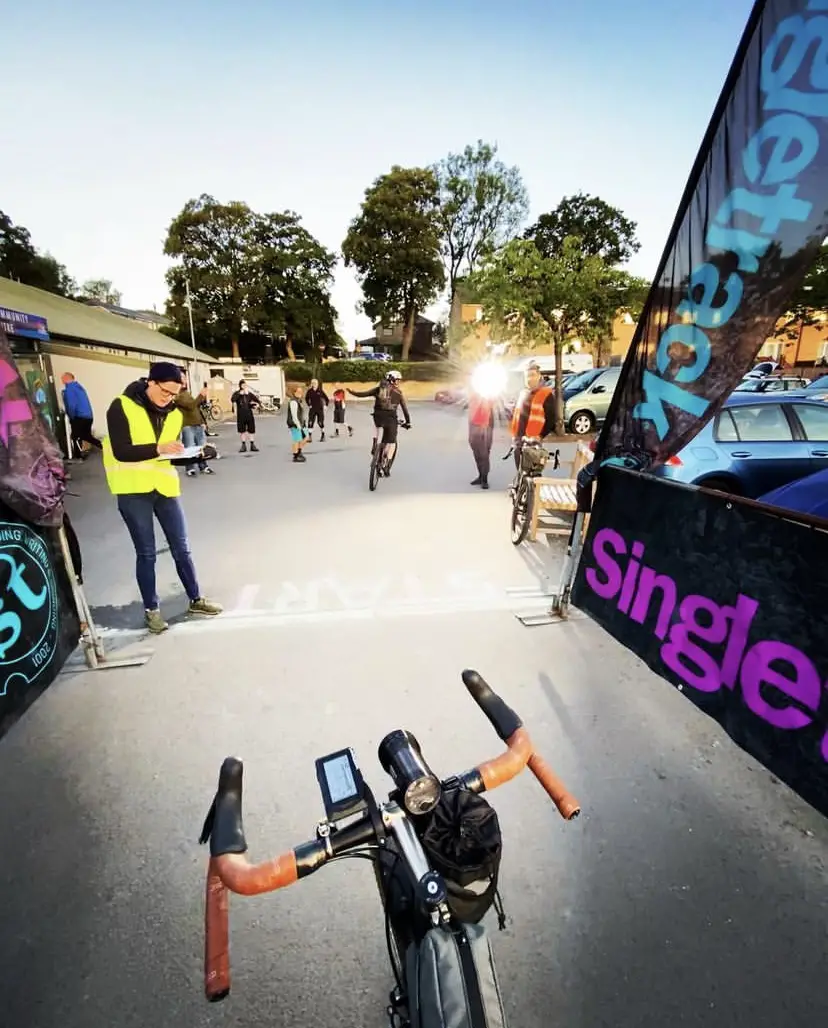
To put on an event of any scale you need a team of people. Bike Club pulled together. In the year leading up to the event Paul Sedman printed two boxes of leaflets. Ian Fearnley created a digital map out of a hand drawn sketch that I gave him. Geoff Symms joined me on rides exploring trails that could connect the whole route. Ricky Barlow became the narrator for the film about the CDT that has the grand title of ‘Bikepacking in Yorkshire’. Nearer to the event weekend in September I pulled together a larger team. Two local riders had signed up for the event but one couldn’t do the ride so volunteered her time. From chatting to Rosie Holdsworth it was clear she had an impressive skill set so she became the ‘Event Marshall’ who stood on the starting line from 6am till 1pm and wrote down the riders departure times. That is one difficult job and not one that I or any of the guys in Bike Club could do. My partner Helen Hudson became the campsite coordinator and Melanie Williamson and Victoria Symms took on the key role of feeding 150 riders.
What tips would you give someone trying to make a new event attractive to entrants?
An event needs to be about something or someone. People want to connect to things that are real. They want to be able to read stories and feel a link to other lives. An event should celebrate your local area and be based on what is distinctive about where you live. Every patch of our land has a unique story, a natural feature, historical character or particular trail that is worth celebrating. As an event organiser your job is to weave these into a story that says to riders from across the country ‘this is what you experience if you travel up here to ride on our trails.’
Once you know what is distinctive about your event then come up with a tagline. For the CDT I came up with the headline of ’12 valleys, 6 moors and 1 floodplain’. This will lead to the badge. When I finished the BB200 ride in October 2021 and Stuart handed me a green BB badge I knew it was something I would put up on the mantelpiece in the front room.
To make an event attractive to riders is one thing. To make it attractive to a range of riders is something else altogether. In my mind a ‘divide’ and ‘trail’ isn’t about one fixed route that everyone has to follow. A ‘divide’ is a fluid line, a buffer zone along which there are a myriad of lines to follow. With that in mind I plotted three routes of different lengths so that riders new to bikepacking could tackle the 90 mile route over two days and experienced riders could choose the 120 mile or 152 mile route.
I’m comfortable with wild camping. But I appreciate not every rider would be so the idea grew of offering a campsite half way round. As it happened, the campsite we chose was a large working farm with three shipping containers where rider’s bikes could be locked up at night. Mind you the site only had one water tap and two toilets so when the entry numbers for the camping option hit 50 I knew we needed to hire portable toilets. All of these developments I put out on our Facebook group and Instagram. People appreciate a bit of honesty.
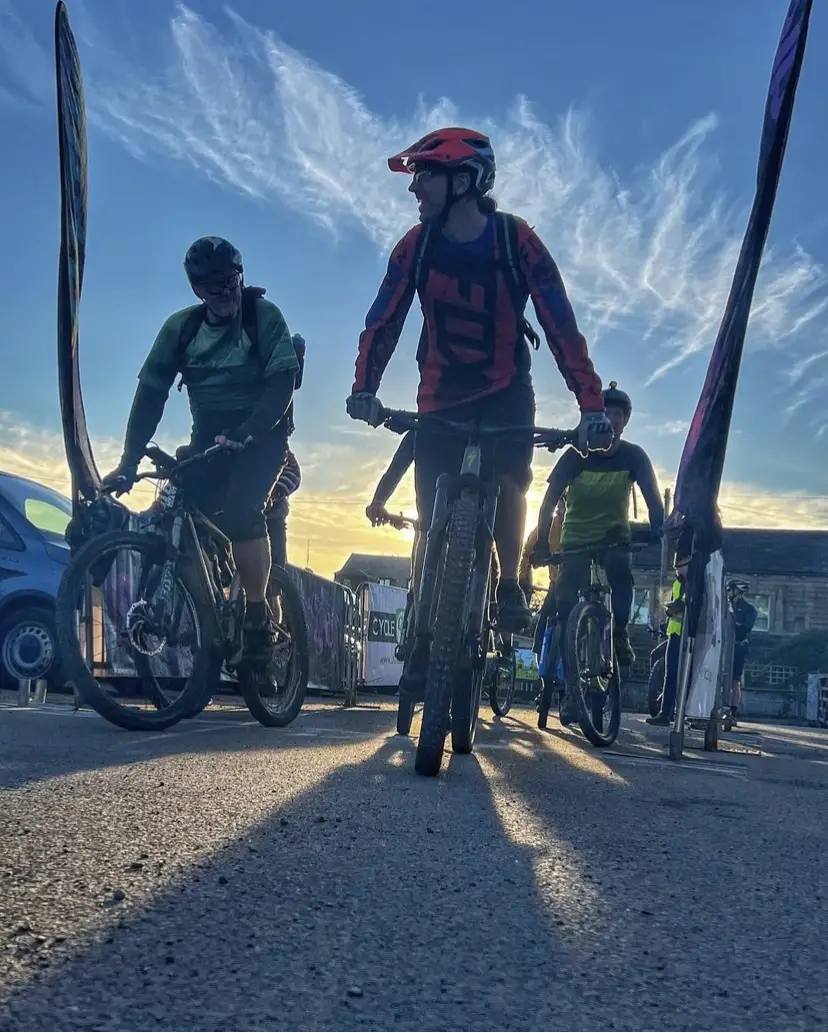
The word ‘divide’ has become very popular but it should only be used when it reflects an actual real watershed. The word ‘watershed’ was originally a geographical term describing the outer edge of an area of land that captures and drains rain water into becks, streams and onward into a single river that eventually flows into the sea. From that, watershed came to mean dividing line or turning point in life. For the gravel rider and mtb-er the watershed of the River Calder is of interest as it marks the high ground where mile after mile of bridleways, causeways and greenways can be found. As the Calder Divide Trail is in West Yorkshire some of the watershed is home to urban spaces such as Queensbury and Shelf but the majority of it is open access moorland, scattered woodlands, farmland, former railway lines, abandoned canal towpaths and small mill towns like Hebden Bridge, Kirkburton and Marsden. So the fact that the CDT is about something real and takes riders through so many different spaces that are still green and natural that is what I hoped would attract entrants.
How did you decide when to hold the event?
I’ve lived in the valley long enough to know that September is that sweet spot of settled weather, cool days and daylight hours that will give you 10 or so hours of ride time. Plus the nights aren’t too cold to wild camp up on the moors.
What do you think are the essential facilities for an event HQ?
An event HQ has to have five things. A decent size car park, easy access to public transport, a kitchen next to your event room, showers and a ‘spare room’. If you find a venue with these facilities you will make the event so much more pleasant. On the Sunday lots of riders used the first class showers in Mytholmroyd Community Centre and the fact that the centre manager trusted me with the keys to the venue meant that riders who crossed the finishing line in the early hours of the morning could then crash in the spare room whilst I could still greet other riders in the Event Control room.
Should you spend on some treats and frills for riders, or to keep costs as low as possible to maximise the amount raised for charity?
Having a treat such as a can of Vocation when you finish and a raffle with prizes such as a brand new large saddle bag and cool T-shirts gives a focal point at the end of the ride. But getting your hands on those as an organiser is another thing altogether. Fortunately there is still a lot of love and trust out there that companies are happy to connect to. So the local brewery donated 14 crates, RESTRAP donated a couple of bikepacking bags, Tailfin contributed hats and cages whilst Theo from Bikemonger up in Ripon came along for the 152 mile route and brought 20 or more quality t-shirts with a cool ‘bikepacking’ image.


How much financial outlay to make an event like this happen should an organiser be prepared to spend? And how much time should they be prepared to commit?
The Calder Divide Trail Challenge attracted 150 entrants and a month before the deadline we were full and a waiting list was put in place. That was only possible because entrants could see a lot of groundwork had gone into the trail and a lot of information was put out so riders knew what the event involved. In terms of outlay there is a price to pay. Community Centres don’t come cheap especially hiring rooms for two days and whilst a Facebook group is free I felt a website was important because I wanted to provide a really clear guide to all the trails. Once you factor in printing costs for a leaflet and colour posters to make the event look professional the initial outlay can soon hit two to three grand and, to be honest, I did lose many nights sleep.
When the CDT Challenge went live on Si Entry I checked every day to see the numbers. By June it was clear enough riders had entered to pay the core costs. By July the pot of money I could donate to Overgate Hospice had started to grow. By August it had passed the target figure of raising £2,000. Enough to support a ‘Will Norman’ day.
In terms of time, organising an event is definitely a second job. But reach out to local bike shops and when they offer support it’s a real buzz. Tony at All Terrain Cycles gave the go ahead to put posters on the counter at his two big bike stores in Shipley and Whereby. Mark at Giant Halifax was happy to put an A2 size poster on his wall and two local riders with 3RT who tested the route were happy to give their time and meet up for an interview I put out in a film. So concentrate on getting the details right and entrants will know they are in safe hands. Find time to celebrate the good things that come along such as local bike shops like Blazing Saddles saying their customers are excited about the event. Then the time and effort has some meaning.
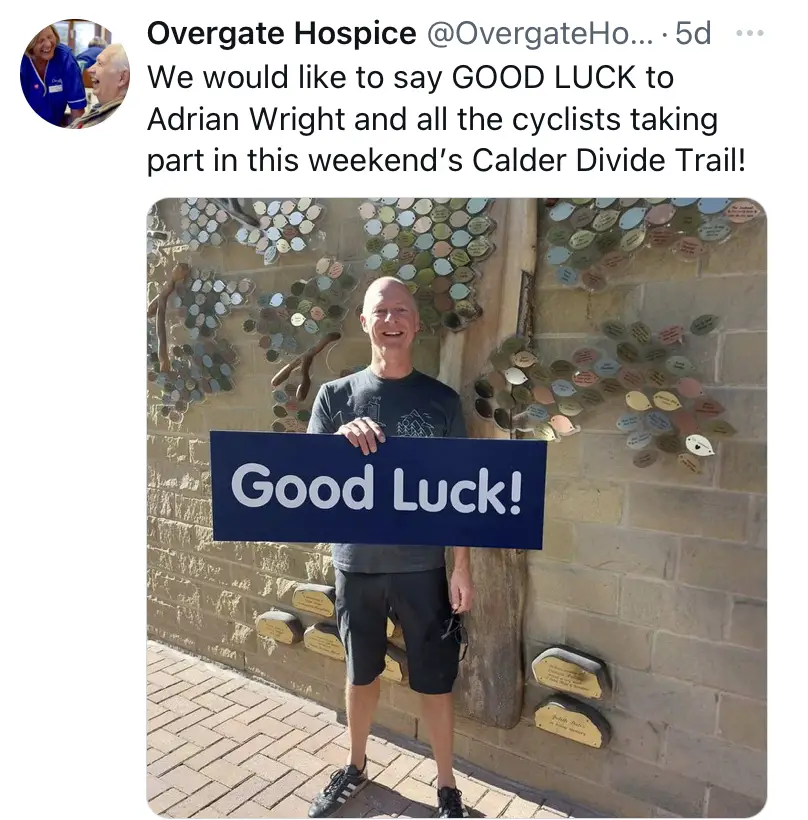
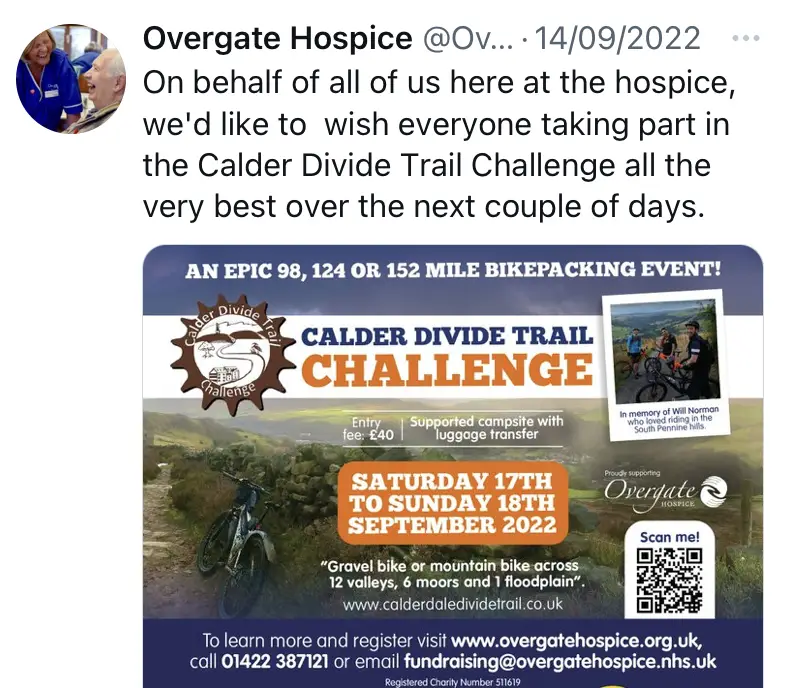
Any words of warning or lessons learnt?!
Order more peas than you think riders can eat. By midday on the Sunday we’d ran out of mushy peas so Helen had to dash out to the local shops. Can’t have your pie and no peas!
As event organiser you have to keep your hands free on the event weekend. You’ll feel a need to do a job but you have to delegate tasks to others and trust they can do the job. So stand to one side and let the event tick over and then you can step in to solve any hiccups that happen such as a rider up from London forgetting his helmet and the six riders who dropped out of the ride but never reported into Event HQ
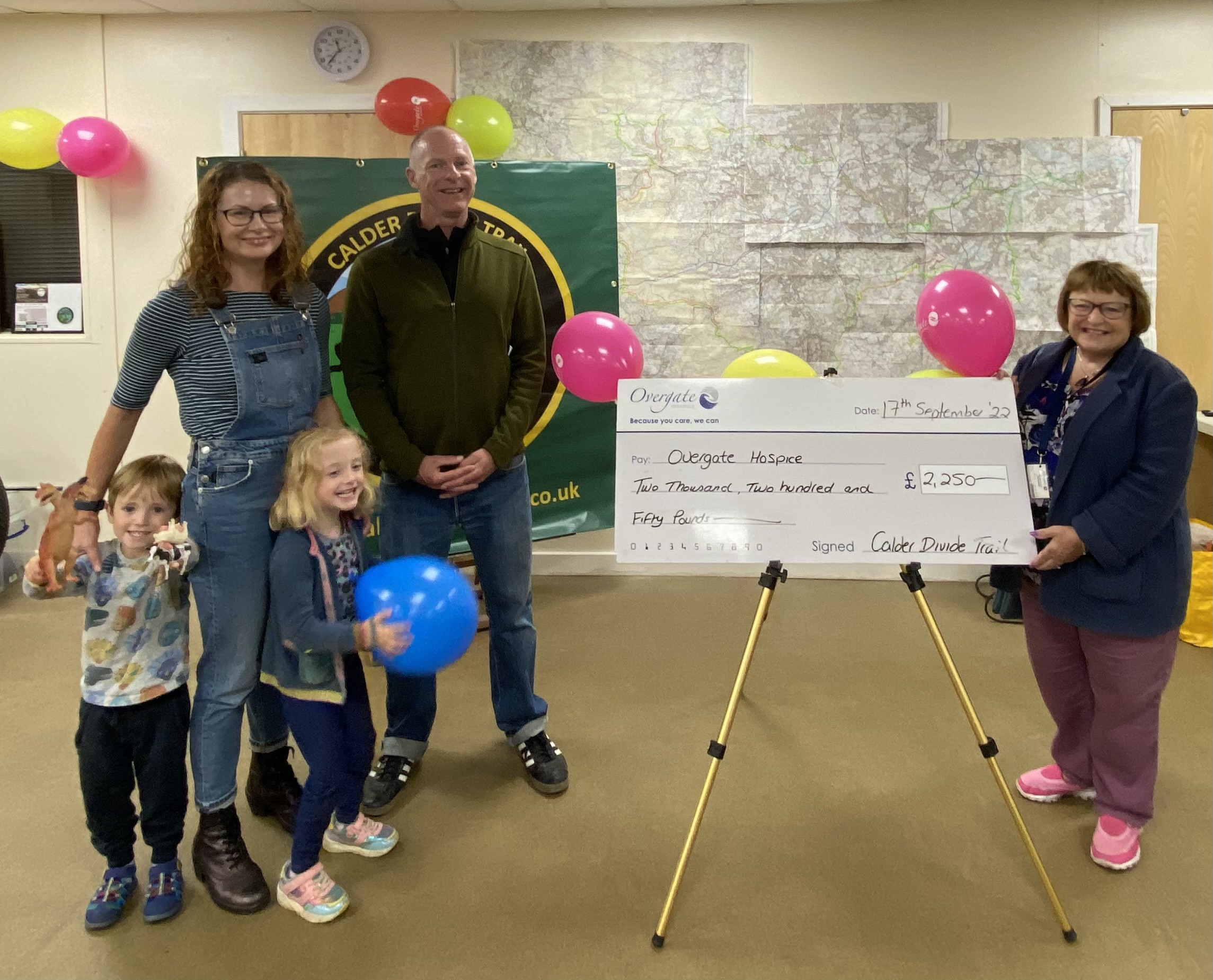
What was the best bit about putting the event on?
Hearing the stories on the finishing line and in the event room as riders tucked into their pie ‘n’ peas. One rider from Hull said “That was the best two days I’ve ever spent on my bike”. When he mentioned he had nine bikes, rode the 120 mile route on a fat bike and despite having visited lots of places around the country he’d never been on so many different types of trail on one route, I took that as a thumbs up.
Thanks to Adrian and helpers for putting the event on – and to all the event organisers out there who lose sleep so we can ride.
Thinking about entering next year?
Mytholmroyd Community Centre has been booked for the venue of next year’s Calder Divide Trail Challenge. The weekend of Saturday 16th and Sunday 17th September 2023 is the event date.
Entries will go live on Si Entry on Monday October 17th 2022. There are no entries on the day. This year’s event was sold out a month before the deadline. It’s sure to be the same next year.
A fourth route will be added to the mix taking riders on an extended crossing of the Pennine moors on the western and northern sections of the CDT.






